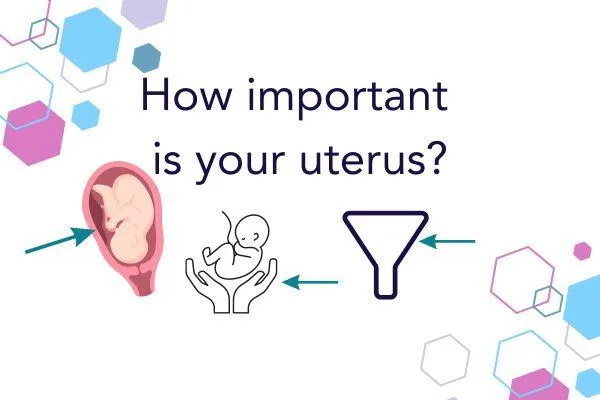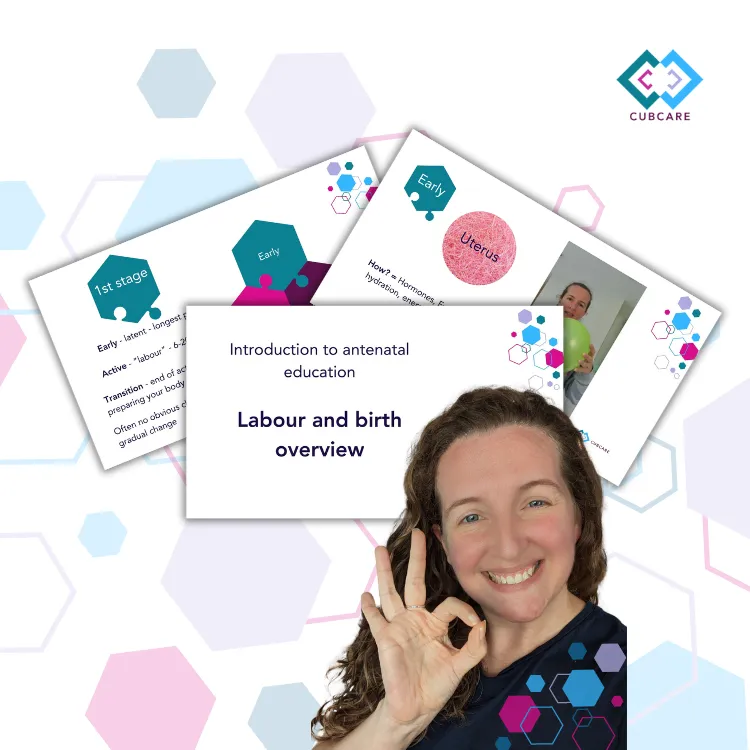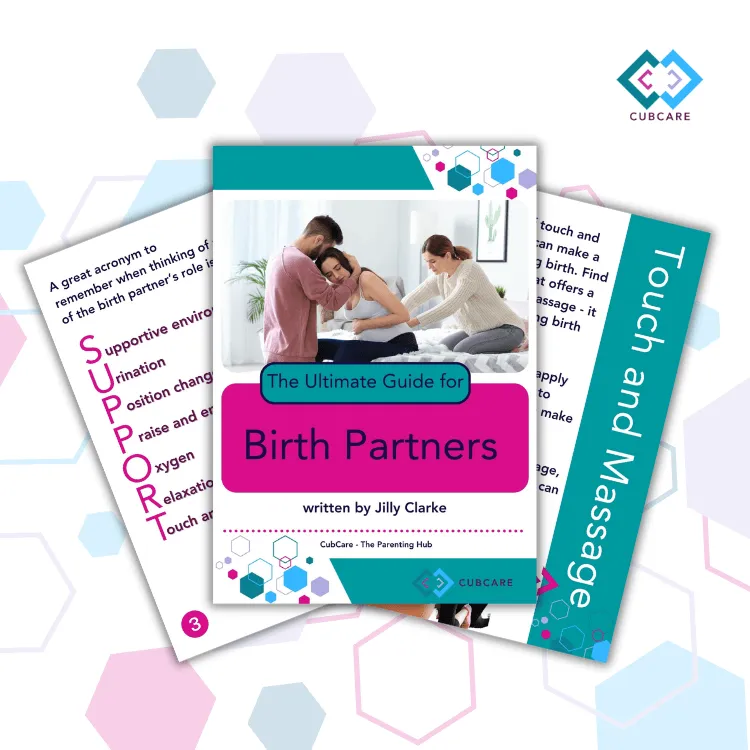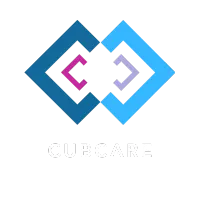We're an award winning Antenatal and Postnatal Education Platform 2025!
(read more here)
CubCare blogs.
From early pregnancy to newborn development.
Advice to help through pregnancy, birth and childhood.
BLOG

The power of the uterus in pregnancy and birth - the uterus' role in labour
"Other muscles in our bodies work in pairs usually but the uterus is a pair of muscles all built into one! The muscle fibres that do the alternate jobs are interwoven within the uterus itself." - Jilly Clarke
What is the uterus and why is it important for birth?
Not enough attention is paid to the uterus, both in life and in pregnancy classes. Just like Ina May Gaskin says, we should be bragging about this amazing muscle. Instead, because of the media, television, and films, when we think of childbirth we are programmed to be scared.
“There is no other organ quite like the uterus. If men had such an organ they would brag about it. So should we.”
Pre-pregnancy, the uterus is a pear-shaped organ (7.5cm long and 5cm wide) that fits snugly under your pubic bone.
In pregnancy, as your baby grows inside your uterus, your uterus grows with them. The uterus changes its shape and size to ensure your baby is perfectly cocooned and protected as they grow.
It gradually inflates like a balloon up to your rib cage, pushing other organs aside. And it increases to a capacity up to 500 times more than before!
Then, after birth, the clever organ returns to its original shape and size (that story is a blog post for another time!)

What is the uterus?
The uterus is a muscle.
By weight, the uterus is the strongest muscle in your body! But even more impressive...
Other muscles in our bodies work in pairs usually but the uterus is a pair of muscles all built into one! The muscle fibres that do the alternate jobs are interwoven within the uterus itself.
The uterus has horizontal and vertical muscle fibres that do the different jobs that a pair of muscles usually do. The outer muscle layer is vertical and runs up and over the uterus. The inner muscle layer is horizontal, and runs like hoops around the baby.

What happens to the uterus during childbirth?
Each layer of muscle fibres in the uterus have different jobs to do.
Throughout pregnancy, the inner horizontal layer of muscles holds the cervix closed, keeping your baby safe inside. In labour this inner layer relaxes, while the outer vertical muscles begin to contract upwards.
This pulls the horizontal muscle fibres up around baby’s head (e.g. your cervix dilating). It starts to build a thick layer of muscle at the top of your uterus ready to push baby out.
When the cervix is fully dilated, this big band of muscle is ready to push the baby down out of the uterus, and through the cervix and vagina. We call this the second stage of labour.
What are practice contractions?
It is important to remember that your uterus has been preparing for pregnancy and birth since you first got your period.
Each month when the inner lining of the uterus breaks down, the uterine muscles contract to open the cervix enough to allow the tissue to leave your body. Despite it being on a smaller scale, your uterus has had lots of practice of the process.
Around 42-92% of people experience some form of Dysmenorrhea (pain during the menstrual cycle). That's a lot of people who's experienced the uterus contracting, pulling the cervix up to help it open, pulling on surrounding tissue and causing cramping sensations. We've developed strategies to cope with these sensations on a monthly basis - it is worth remembering that whilst it is on a bigger scale, labour contractions are doing the exact same thing.
Also, during pregnancy, the outer layer of muscle practises for the real thing. Your uterus will contract and relax every day. You will not usually feel these practice contractions until later in pregnancy as that uterus is bigger. We call them Braxton Hicks contractions, and they are helpful for birth.
Braxton Hicks are completely normal and harmless. They do not change the cervix whilst the horizontal layer of muscle is supporting, and there are no hormones at play helping to change the cervix.
You might feel your bump go completely hard for a period of time, it can feel quite tight and restrictive, or you might feel a pulling sensation. Because it is just the outer layer of muscles practicing, there is no harm to the pregnancy or baby.
How to cope with contractions during labour
Understanding how your amazing uterus works is the first step to an empowering birth experience. Education is important so that you feel confident in the process. It will allow you to understand exactly what is happening with your body.
To educate yourself, you should attend antenatal classes that get into the details of the labour process, what happens and what you can do to help yourself. Classes like our Online Antenatal Courses will give you this in-depth education.
Another important way that you can help the progress of the uterus in labour is to bypass your brain. Let your body do the work it is designed to do without your conscious brain getting involved.
Mammals require a private space with a feeling of safety to birth effectively. When faced with a bright, busy environment with unfamiliar people the brain releases adrenaline so that it can stay alert.
When this stress response has been activated during labour, the horizontal layer of muscles in your uterus tenses up to protect baby from a potential threat to their safety if they were born.
Even if we know that this isn’t the case, your body doesn’t. This then makes it difficult for the vertical muscles to move upwards with each contraction, because the lower vertical layer of muscles is pulling on them.
This might result in a more difficult sensation with each contraction as the muscles are working in opposition to each other rather than in partnership. This is more uncomfortable for you and in some cases, this can even slow down or stall your labour.
How can I ease painful contractions during labour?
Make use of relaxation
By educating yourself you can learn to trust that your body is doing the job that it is designed to do. The next step is to let you brain do what it needs to do.
Naturally, the conscious part of the brain, responsible for your awareness and conscious thoughts starts to switch off as your labour progresses. This allows the subconscious part, which is responsible for birth, your breathing, digestion, blinking (the bits that happen without you thinking about it) to take over.
When you can stay relaxed, to allow the conscious part of the brain to slow down and allow the subconscious segment to take over, your birth will seem much easier.
There will be little adrenaline, making you aware of your surroundings, and much more oxytocin and endorphins (our wonderful labour hormones). By staying relaxed you will also allow your muscles to relax as well, letting the uterus do its job with as little restriction as possible.
Despite knowing the process and what you can do to help yourself it will likely take a lot of reminders and prompting. The more you can prepare your body during pregnancy to allow yourself to stay calm and relaxed.
Attending a hypnobirthing or yoga class, or practicing relaxation techniques during pregnancy can really help you during labour. Our CubCare Active Antenatal classes are perfect for that…
Take on more oxygen - fuel your uterus
Oxygen is one of our favourites at CubCare. Not only does conscious breathing help your muscles to relax, and your conscious brain quieten; it also fuels your muscles so that they can work.
We know that when a muscle that is deprived of oxygen it works less efficiently and creates lactic acid. We also know that lactic acid causes cramp and is extremely uncomfortable!
When this happens during a workout, we can stop using that muscle, rest and recover, and pump oxygen in, to breakdown the lactic acid before resuming when we feel better.
During labour, whilst the uterus does go through periods of work and recovery, if lactic acid builds up through lack of oxygen you are unable to make your uterus stop working.
So, your uterus will continue contracting, just like you cannot use willpower to stop your digestive system from working.
And contracting whilst lactic acid is present will be more uncomfortable, producing adrenaline in your body, and undoing or stalling your hard work!
Your uterus is an amazing organ that does not need to be taught or told what to do. When you are feeling fear or stress, that power is incredibly intense and can be overwhelming.
But remember, it is your body creating that power, and you can decide to fight it or use that power and go with it.
Our CubCare Active Antenatal classes provide such an important place to practice techniques that can actively help you in labour.
Taking time to prepare, to learn, to understand and to practice can really make your birthing journey more manageable.
Less film and television drama, more quiet and unassuming.
Check out our blog on Ten alternatives to medical pain relief for labour (cubcare.co.uk)
Remember, our bodies are SO capable. With the trust, the knowledge and the education you CAN have an amazing birth experience.
That's why we have our Antenatal Course (both in person and online), Refresher Antenatal Course (both in person and online), and our Birth Partner course so that everybody can get knowledgeable and confident for birth.
Refresher Antenatal Course in person
Refresher Antenatal Course online
Birth Partner course (included in our Antenatal course)
Antenatal Course in person
Antenatal Course online
Easily navigate to our most popular Blog categories
Download our Freebies

Labour and Birth
Watch our introduction to antenatal education webinar, our labour and birth overview - to start your antenatal education journey. Understanding the process, and what you can do to influence it.

Pregnancy Planner
Free Pregnancy Planner to help you prepare for a little one. Prepare your body, your mind, your finances and your home. Get organised, feel good and prepare for an active, positive birth.

Birth Partner Guide
Your ultimate guide to being the best birth partner during pregnancy, birth and recovery. Learn what you need to do, and what you need to learn to be the best birth partner possible.

Expecting Again Guide
Your ultimate guide to preparing for another birth and an extra baby. Our top tips for navigating pregnancy and birth, and helping your older ones to transition into their new role as a big sibling.
Based in Welwyn Hatfield, offering local pregnancy support and doula services across Hertfordshire: St Albans, Hatfield, Welwyn Garden City, Potters Bar, Stevenage, Harpenden, Hitchin, Barnet, Mill Hill and surrounding areas.
Online antenatal and postnatal education available UK-wide.
© Copyright 2025 CubCare The Parenting Hub. CubCare is operated by The Birth and Baby Company Ltd. Company No. 15655287
Privacy Policy | Terms & Conditions | Medical Disclaimer | Inclusivity and Accessibility

